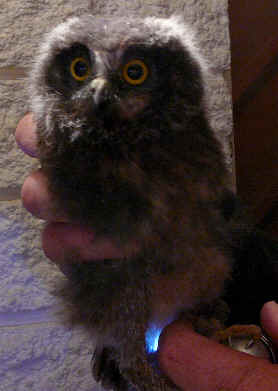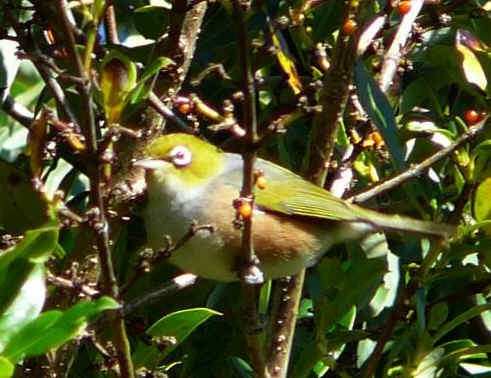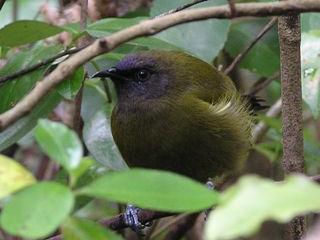|
|
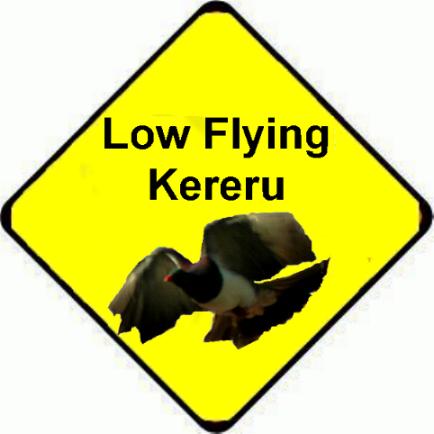
|
NEW ZEALAND NATIVE BIRDS TO BE SEEN ALL YEAR ROUND IN OUR PARADISE (Most active June to December)
TUI – (Prosthemadera novaeseelandiae)– (other less known name Parson Bird) Perhaps NZ’s best know songbird.
The feathers may appear black or reflect metallic
and iridescent greens, purples and blues. They have a tuft of white feathers on their throats. Tuis are noisy fliers and occasionally perform
acrobatic flight, darting about at high spped and plunging
with closed wings. They
seek nectar in native and exotic plants.
They are known for their melodious song, however
humans miss, much as it is pitched in a frequency beyond
our hearing. We
do hear a wide repertoire of chimes, musical rifts,
wheezes and other noises “poured forth in profusion”. Description: sexes alike with female slightly smaller.
Mainly iridescent green with dark bluish purple
reflections appearing black from a distance. Back and sides of neck ornamented with white shafted
filamentous feathers which curl forwards on sides of neck.
Back and wing converts to brown with bronze reflections. White
wing bar. White
double throat tuft of curled feathers.
Belly and sides reddish brown.
Curved bill and feet blackish brown. Female
as smaller throat-tufts, and paler reddish brown abdomen. Immature
plumage slay black, except wing and tail quills which have
metallic green outer webs; a crescentic mark or extensive
patch of greyish white on the throat; dusky white
wing-bar. White throat tuft from about 6 weeks.
Lacks wing slots. Movements are vigorous and flight is often noise especially when darting through the trees at a high speed; performs aerobatics, often plunging down with closed wings from some height. Voice:
Contains relatively pure frequency bell-like notes;
harsher clonks, rattles, wheezes, chuckles and clicks, and
quiet squeaks. Covers
wide frequent range, with higher frequency notes inaudible
to human ears. Both male and female sing, but male more vociferous.
Mimics many noises, from human speech, whistles and
pig spueals to other birds! Alarm calls extremely guttural
and include beak clicking.
Chicks and fledglings give high frequency begging
calls. |
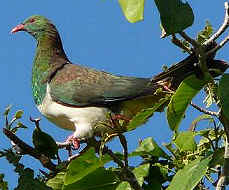
 ©
Copyright Mount Tutu Eco-Sanctuary ©
Copyright Mount Tutu Eco-Sanctuary
KERERU – (Hemiphaga novaeseelandiae) The kereru is the largest pigeon in New Zealand. The head,
throat, upper breast and upperparts are a metallic green
with purplish sheen. The upper breast is shaped like
a babies bib and clearly stands out against the pristine
white of the lower breast and underparts. The bill
is crimson with an orange tip and both the eye and feet
are crimson. The call is a soft penetrating 'kuu'.
Kererū are about 51 centimetres long and 650
grams in weight. Feeding
Kererū eat the fruit of native
plants such as miro, tawa, pūriri, taraire,
kahikatea, nīkau and coprosma, and introduced plants
like privet, elderberry and plums. When fruit is scarce
most birds also eat leaves, favouring kōwhai, tree
lucerne, willow and poplar. Now that other large birds like the moa are extinct, the
kereru is the only bird left with a beak that can open
wide enough to swallow the big seeds of trees such as
puriri, miro, taraire, karaka, tawa and kohekohe. They also eat the fruit of nikau, titoki, pigeonwood,
supplejack, kahikatea and many shrub species and in spring
the leaves and flowers of houhere and kowhai, feeding on a
total of 72 native species. Breeding
is between September and February and is timed to
coincide with certain fruits being available. The
nest is a flimsy affair, often a precariously balanced
platform of sticks on a horizontal fork. Often the
egg or chick can be seen from the ground through the nest.
Both adults incubate for about 30 days and the young
kereru fledge at between 30 - 45 days old. Māori hunted kererū, but since 1922 the birds have been protected. |
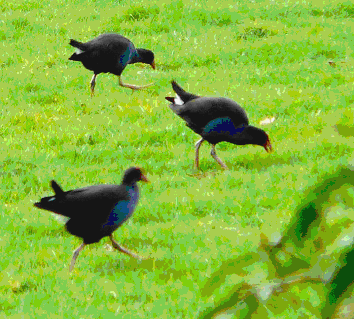 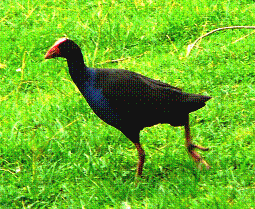 PUKEKO
– Porphyrio
porphyrio melanotus Swamp hen The pukeko is deep blue with a black head and upperparts. The
white undertail is flicked with every step. The bill
and shield are scarlet, the eye red and the legs and feet
are orange – red. The call is a loud unmusical
screech and also a subdued musical ‘tuk – tuk’. Breeding
is mainly between August and March. Nests are built
on a tussock or rush clump, with the grass or rushes being
beaten down into a platform. Territories are often
occupied by groups and two or more females may lay in the
same nest. The incubation of 23 – 27 days is
shared by all. Each female lays 4 – 6 buff eggs
with brown blotches at the larger end. All birds,
including non – breeding helpers ( offspring from
previous broods) help in feeding and caring for the
chicks. |
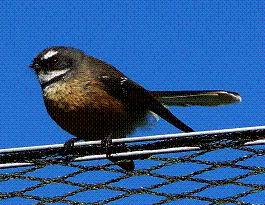 ©
Copyright Mount Tutu Eco-Sanctuary ©
Copyright Mount Tutu Eco-Sanctuary
FANTAIL
– Rhipidura
fuliginosa placabilis Piwakawaka The fantail is a small native forest bird with a small head and
bill and a long tail which opens to a fan, thus giving the
bird its name. It has a grey head, white eyebrow and
white and black band under the chin on the upper chest.
The back is brown and the underparts are a peachy gold.
The tail is black and white. The juvenile looks very
similar but lacks the upper chest markings and has a
browner body and rusty-brown wing coverts. There is
a black phase which is found mainly in the South Island,
which is sooty black except for a white spot behind the
eye. Fantails feed mainly on invertebrates taken whilst flying.
Using their fanned tail they are very manoeuverable which
helps them quickly change direction whilst flycatching.
They are known to hop around upside down in amongst tree
ferns and foliage looking to pick insects from the
underside of leaves. Their main prey are moths,
flies, spiders, wasps, and beetles. They seldom feed on
the ground. Although the fantail lifespan is relatively short in New Zealand
(oldest recorded 3 yrs but in Australia they have been
recorded up to 10 yrs) the breed survives due to the
prolific and early breeding. Juvenile males can
start breeding between 2-9 months old and as many as 5
clutches can be laid in one season, with between 2-5 eggs
per clutch. The fantails stay in pairs all year but
high mortality means they seldom survive more than a
season. Both adults incubate for about 14 days and
the chicks fledge at about 13 days. Both adults will
feed the young but as soon as the female starts building
the next nest the male takes over the role of feeding the
previous brood. The main fantail contact call is a penetrating cheet cheet,
sounding a bit like a squeaky toy. |
|
OTHER
BIRDS RESIDENT AT OUR PARADISE: MOREPORK (NATIVE NIGHT OWL)
Morkpork (Ruru) fledgeling in Tim's safe hands.
WAXEYE
BELL BIRD
PARADISE DUCK
GREY WARBLER SHINING CUCKOO AN OCCASIONAL KAKA KAKARIKI HARRIER HAWKE NEW ZEALAND FALCON NEW ZEALAND GREY DUCK
|

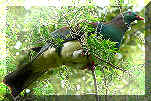
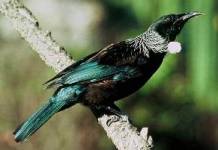
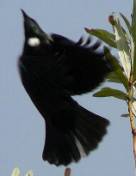 ©
Copyright Mount Tutu Eco-Sanctuary
©
Copyright Mount Tutu Eco-Sanctuary
